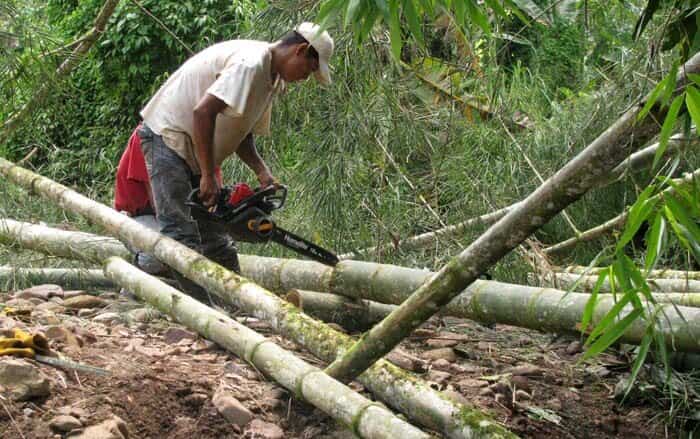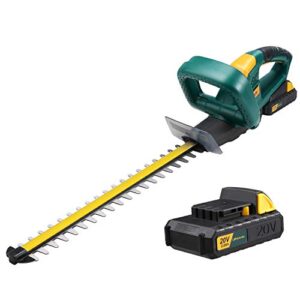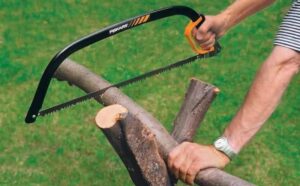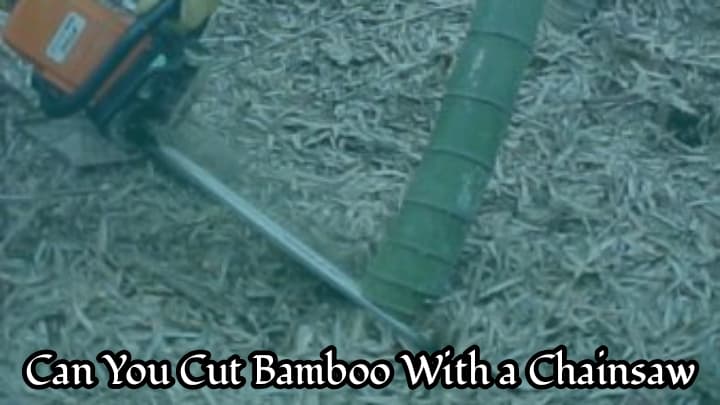Bamboo is a fast-growing grass that can reach up to 30 feet in height. It is one of the most popular plants in the world and is used in various ways, including as a building material, furniture, paper, and even food.
When the time for harvest, pruning, or grooming comes, you need a way to cut the bamboo, and that’s where the question ‘can you cut bamboo with a chainsaw’ comes in.
The short answer is YES. It’s possible to cut bamboo using a chainsaw. A chainsaw offers a quicker way to cut the bamboo, but there are few risks involved. If you decide to cut yours utilizing this method, you have to practice caution and other factors.
Table of Contents
What to keep in mind when cutting bamboo with a chainsaw
Before you start chopping down the bamboo, there are some things you need to take into consideration. They include;
1) The chainsaw must be in good condition: Cutting bamboo with a chainsaw can be difficult if the chainsaw is not in good condition. The chain must be sharp, and the saw must be properly oiled.
2) Choose the correct type of bamboo: There are two main types of bamboo – running bamboo and clumping bamboo. Running bamboo spreads quickly and can be challenging to control, while clumping bamboo is slower-growing and easier to manage. If you’re cutting bamboo for the first time, it’s best to choose a clumping variety.
3) Cut at the right time of year: Bamboo can be cut at any time of year, but the best time to do it is during the spring or fall. This is when the plant is actively growing, and the new shoots are tender.
4) Use the right size chainsaw: The size of the chainsaw you use will depend on the thickness of the bamboo. For smaller diameter bamboo, a 14-inch saw will suffice. You’ll need a larger saw for thicker bamboo, such as a 16-inch or 18-inch saw.
5) Make sure the chainsaw is at the correct angle: When cutting bamboo with a chainsaw, it’s important to maintain the right angle. The chain should be at a 60-degree angle to the bamboo.
6) Cut through the culm (the main stem): The easiest way to cut bamboo is first to identify the culm (the main stem). Cut through the culm at ground level, using a back and forth motion.
7) Finish cutting the bamboo: Once the culm has been cut, finish cutting through the rest of the bamboo. Use a sawing motion to cut through the stalk, careful not to damage the surrounding area.
Risks of Cutting Bamboo with a Chainsaw

While cutting bamboo with a chainsaw is relatively safe, there are some risks involved. You want to make sure that you use the proper techniques and follow all safety precautions.
1) Kickback
One of the biggest risks when cutting bamboo with a chainsaw is kickback. Kickback occurs when the chain on the saw catches on something and propels the saw back towards the user. This can be extremely dangerous and even fatal.
To avoid kickback, you want to ensure that you are using a chainsaw with a low-kickback chain. You also want to keep the saw properly sharpened and lubricated.
2) Chain Failure
Another risk when cutting bamboo with a chainsaw is chain failure. This can occur for various reasons, such as using a saw with a dull or damaged chain. It can also occur if the saw is not properly lubricated.
If the chain on your saw does fail, it can be very dangerous. The chain can break and fly off the saw, potentially hitting you or someone else.
3) Operator Error
Operator error is always a risk when using a chainsaw, as with any power tool. If you are not familiar with how to use a chainsaw, or if you are not using proper techniques, you can easily injure yourself or someone else.
Always read the instruction manual for your saw and make sure that you understand how to use it properly before operating.
4) Fire
Another risk to consider when cutting bamboo with a chainsaw is fire. The saw can easily create sparks that could ignite any dry bamboo. Always be aware of your surroundings and have a fire extinguisher nearby just in case.
5) Carbon Monoxide Poisoning
Another risk to consider when using a chainsaw is carbon monoxide poisoning. The saw produces exhaust fumes that can be harmful if inhaled. Always use the saw in a well-ventilated area and wear a respirator or face mask if possible.
Best Alternatives to Cutting Bamboo with a Chainsaw
If you think the above risks are too many for the task or if are not comfortable using a chainsaw to cut bamboo, there are some alternatives that you can consider.
1) Use a Hedge Trimmer

One alternative to cutting bamboo with a chainsaw is to use a hedge trimmer. Hedge trimmers are designed for cutting through thick vegetation and can easily handle bamboo. They are also much lighter and easier to maneuver than a chainsaw.
2) Use a Reciprocating Saw
Another alternative to cutting bamboo with a chainsaw is to use a reciprocating saw. Reciprocating saws are designed for cutting through thick materials. They can easily handle bamboo and are much easier to maneuver than chainsaws.
3) Use a Bow Saw

Another alternative to cutting bamboo with a chainsaw is to use a bow saw. Bow saws are designed for cutting through thick materials. They can easily handle bamboo and are much easier to maneuver than chainsaws.
4) Use Bamboo Shears
If you only need to cut a few bamboo stalks, you can use bamboo shears. Bamboo shears are designed specifically for cutting bamboo. They are much easier to use than chainsaws and will not damage the surrounding area.
5) Use a Handsaw
Another alternative to cutting bamboo with a chainsaw is to use a handsaw. Handsaws are designed for cutting through thick materials. They can easily handle bamboo and are much easier to maneuver than chainsaws.
Final Thought
Bamboo is a tough material to cut through, but it can be done with the right tools and techniques.
That’s why it’s always best to practice caution when operating any power tool and make sure that you are familiar with the proper techniques before beginning.
You can use a chainsaw to cut bamboo, but there are some risks that you need to be aware of. But, of course, there are safer ways like using a handsaw.
You might read our articles on How to carry a chainsaw on a tractor and how to lower compression on a chainsaw.

